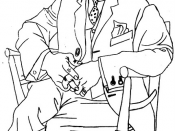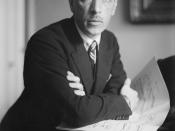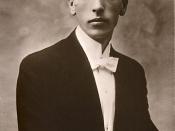The opening section of the "Shrovetide Fair" by Stravinsky begins with an ostinato in the upper woodwind with a flute solo and this light timbre creates a new beginning (Theme A). The melodic interest is then taken over by Theme B with the violins that begin the crescendo which develops throughout the introduction. Stravinsky adds clarinet to the repeated ostinato quaver motif thus building the dynamic contrast towards the first peak. Frantic preparation of the fair is implied by fast moving strings playing a frenzy of trills and tension is built with a thick texture of instruments playing contrapuntal rhythmic motifs. A dynamic climax is achieved by the introduction of an alternative timbre in the shape of a new fanfare motif played by the trumpets (Theme C). This new texture creates an "opening" to the fair.
The "hurried" motif continues to show the fair well underway (Theme D) and the peak is reached by the addition of the trombones increasing the dynamic and bringing the orchestra together in unison for the first time.
The piece develops with the introduction of a new clarinet motif (Theme E ) and this staccato shape gives a feel of people at work. Percussion through the use of a cymbal invites a further new timbre helping the music re-enter the original "busy" theme. The woodwind motif returns with the added twist of a bass drum on the down beat giving an element of excitement. Then once again the dynamics are lowered (Theme F) and these elements are replaced by a calmer structure as though we are gradually leaving the main part of the fair with the hubbub diminishing .
In conclusion, Stravinsky uses all the elements of music to express the feeling of the fair. The ever-changing combination of rhythm, dynamics, timbre and texture...


